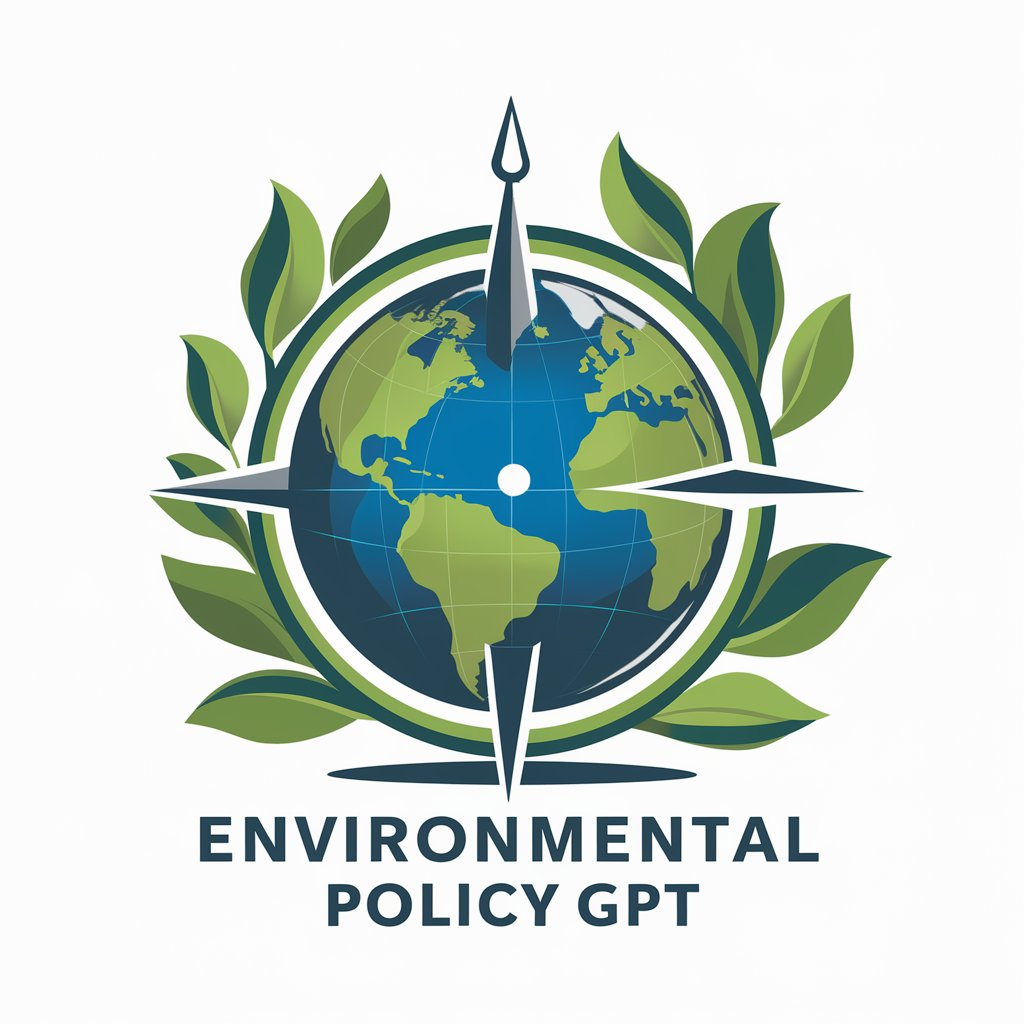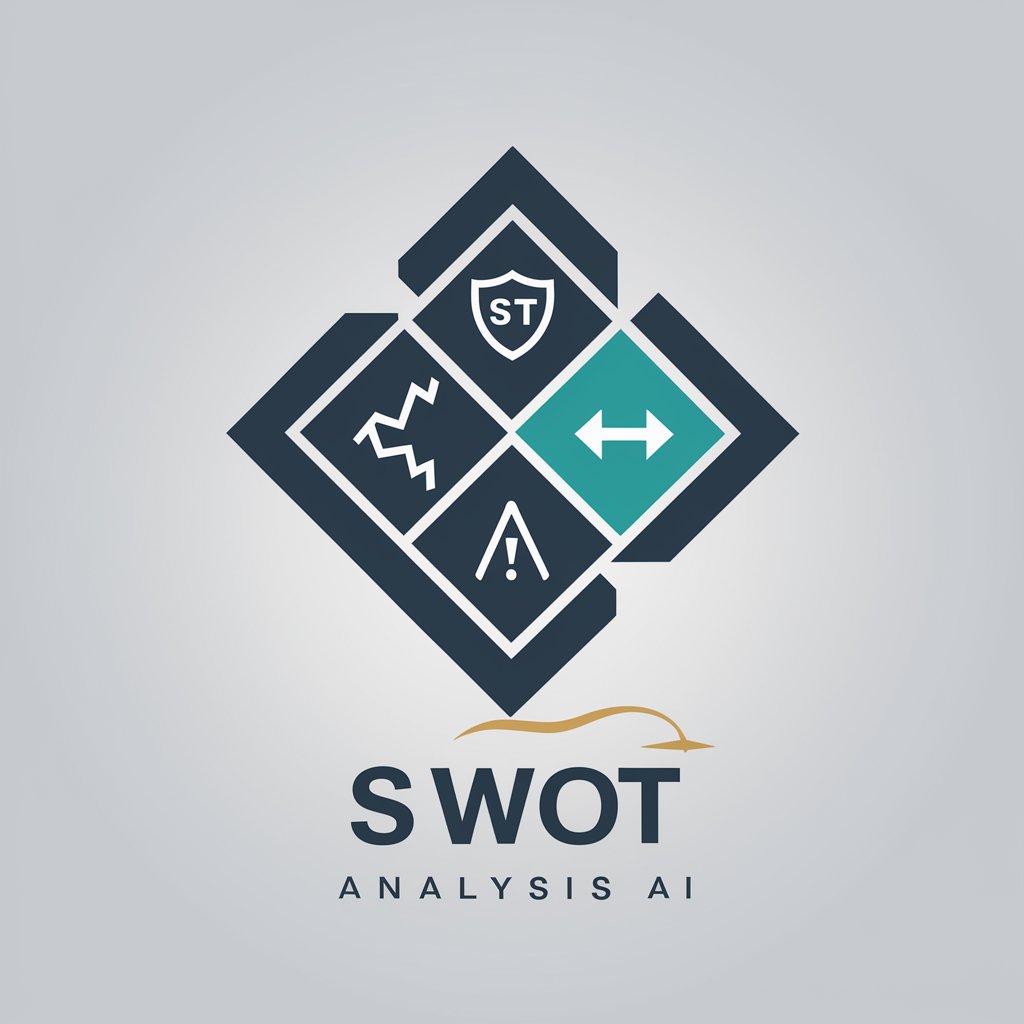Environmental Policy GPT - Expert Sustainability Insights

Welcome to Environmental Policy GPT, your guide to sustainability and conservation.
Empowering Sustainable Decisions with AI
What are the latest trends in environmental policy and how can businesses adapt to them?
Can you provide examples of successful conservation efforts around the world?
How do regional variations impact environmental policies and practices?
What are the most effective sustainable practices for small businesses?
Get Embed Code
Introduction to Environmental Policy GPT
Environmental Policy GPT is designed as a specialized AI model to provide expert-level advice and insights on a wide range of environmental issues, regulations, and sustainability trends. It is equipped to address global environmental challenges, offer guidance on implementing sustainable practices, and advocate for conservation efforts. For instance, it can analyze data from the Environmental Dataset Gateway by the US EPA, utilize sustainability metrics from Yale Department of Economics, and interpret research on climate and energy policies from the Pew Research Center. This model integrates a variety of data sources, including government databases, academic research, and international organizations' reports, to deliver comprehensive and actionable environmental policy advice. Powered by ChatGPT-4o。

Main Functions of Environmental Policy GPT
Analysis of Environmental Data
Example
Utilizing data from the US EPA's Environmental Dataset Gateway to offer insights on air quality trends and suggest mitigation strategies.
Scenario
A local government seeking to develop an air quality improvement plan.
Guidance on Sustainable Practices
Example
Providing businesses with strategies to improve sustainability metrics, based on data-driven research from Yale's Department of Economics.
Scenario
A corporation aiming to enhance its sustainability governance and reduce its environmental footprint.
Environmental Policy Advice
Example
Interpreting OECD environmental data and indicators to compare policies and recommend best practices for green growth.
Scenario
Policy makers looking to benchmark their country’s environmental performance against OECD member countries.
Conservation Efforts Support
Example
Offering innovative conservation strategies that leverage big data for sustainable development from the United Nations.
Scenario
Conservation organizations seeking to employ data-driven approaches for protecting ecosystems.
Ideal Users of Environmental Policy GPT Services
Policy Makers and Government Officials
Individuals in legislative and regulatory roles who can use the GPT’s insights to craft, adjust, or implement environmental policies and regulations.
Environmental Activists and NGOs
Activists and non-governmental organizations focusing on environmental conservation can benefit from data-driven insights and advocacy strategies.
Businesses and Corporations
Companies seeking to integrate sustainable practices into their operations or to comply with environmental regulations can find guidance and recommendations.
Academics and Researchers
Scholars and scientists involved in environmental studies can utilize the GPT for data analysis, trend identification, and in supporting their research initiatives.

How to Use Environmental Policy GPT
1
Begin by visiting yeschat.ai for an accessible trial that doesn't require a login or a ChatGPT Plus subscription.
2
Identify your environmental policy query or the sustainability topic you need assistance with.
3
Use specific keywords or questions to guide the Environmental Policy GPT in understanding your request more accurately.
4
Review the provided information and utilize the references for further research or verification.
5
For more complex inquiries, consider breaking down your question into smaller, more detailed parts for targeted assistance.
Try other advanced and practical GPTs
Como criar um Podcast Impressionador
Empowering your podcast journey with AI

Biblical Characters
Explore Bible characters with AI

Health Canada GPT
AI-powered Canadian Healthcare Guidance

LOMLOE - D38/22 - MÚSICA Y DANZA
Empowering Music and Dance Education

Campsite Sage
AI-powered camping insights at your fingertips.

VueJS Guru w/ Up To Date Knowledge
Your AI-powered Vue.js Mentor

SWOT Analysis AI
Empower decisions with AI-driven SWOT analysis.

Character Creator
Crafting Characters with AI

Martin Luther King Jr. en Dialogue
Engage with MLK's Legacy Digitally

OA خبير تحسين العمليات
Optimize Operations with AI-Powered Insights

Verse Sculptor
Craft Poetry with AI Precision

Researcher
Empowering research with AI precision.

Frequently Asked Questions about Environmental Policy GPT
What sources of information does Environmental Policy GPT use?
Environmental Policy GPT utilizes a wide array of sources including governmental databases, academic research, and reputable environmental organizations. Key resources include the Environmental Dataset Gateway - US EPA, Yale's sustainability metrics, and the OECD's environmental data.
Can Environmental Policy GPT provide advice on implementing sustainable business practices?
Yes, it offers actionable advice and innovative strategies for businesses aiming to adopt sustainable practices, leveraging the latest research and sustainability trends.
How can Environmental Policy GPT assist in academic research on environmental policy?
It can provide up-to-date data, reference relevant studies, and offer insights into current environmental policies and sustainability metrics, supporting comprehensive research efforts.
Does Environmental Policy GPT cover local environmental regulations?
Yes, it addresses both global and local environmental concerns, providing information on regulations and conservation efforts specific to various regions.
How does Environmental Policy GPT stay updated on environmental issues?
It is regularly updated with the latest environmental research, policy changes, and innovative conservation strategies, ensuring the information remains current and relevant.
